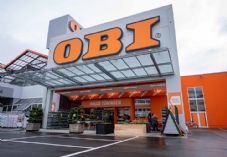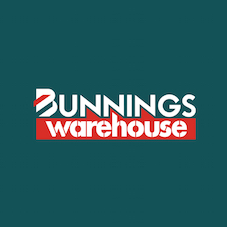UK DIY News
From Digital Excellence To High Street Renaissance: Master The New Retail Era

In this article, Ed Bradley, Chief Growth Officer at Virtualstock, discusses how brick and mortar retail stores can navigate the digital age without sacrificing their storefronts.
As the UK becomes the third largest e-commerce market worldwide, retailers are in a race to modernise their offerings for customers. Whether shopping online or on the high street, consumers are savvy, digitally fluent, and increasingly expect agile journeys. Many shoppers believe they get better deals online, especially when capitalising on discounts during major sales events. In the UK, £1.12 billion was spent online in Black Friday Sales. Meanwhile, 71% expect brands to deliver personalised interactions. And yet, we’re witnessing a turning point. This year, we’ve seen numerous retail ‘boomer’ chains making a comeback, and most recently, the anticipated return of Topshop to the high street via new wholesale partnerships with brick-and-mortar retailers. The high street isn’t dead - in fact, it’s experiencing a resurrection. Demand is rising for a seamless integration of online and physical retail spaces, where customers enjoy the convenience of digital tools while interacting in physical stores.
For traditional businesses seeking to capitalise on this blend, the goal is clear: create an agile, hybrid model to meet consumer expectations, streamline operations, and unlock sustainable growth.

Image: Ed Bradley, Chief Growth Officer at Virtualstock
1. Nice to ‘e-meet you’: the role of marketplaces in reaching new audiences
From Etsy to eBay, online marketplaces offer retailers an invaluable opportunity scale their online presence and engage with new customer segments. Think of these platforms as discovery engines - intermediaries connecting businesses with audiences they might not reach otherwise.
But relying too heavily on third-party marketplaces has its downsides. Retailers risk losing control over the customer experience, diluting their identity, and gaining limited visibility into product quality. With 66% of shoppers becoming more cost-conscious amid rising prices, it’s never been more important for businesses to prove their value. Consumers expect both affordability and quality- and they want to trust that what they’re buying is worth the spend.
To build that trust and long-term loyalty, store owners need to offer a curated, high-quality range that reflects their values and delivers a consistent, personalised experience – something dropshipping, when done right, can achieve.
2. Scale without stock with dropshipping freedom
Dropshipping allows retailers to widen their product range without the financial burden of managing large inventories. By using a dropshipping model, retailers can test new product lines or tap into trending categories with minimal upfront investment, all while delivering greater convenience and expanding basket sizes. This strategy also makes it easier for customers to find what they need in one place.
However, for dropshipping to work effectively, it must align with the brand’s core values and commitment to quality. Retailers need to leverage data to curate a range that meets their unique preferences, search trends, and competitor offerings. to curate a selection that stays in line with their ethos. Potential challenges, such as quality control or delays, can be mitigated by selecting trusted suppliers and integrating real-time performance monitoring systems, ensuring product excellence remains consistent across the entire range.
3. Unlock operational excellence with the right technology
To make the most of dropshipping and other fulfilment models, retailers should consider using range extension platforms to manage supplier relationships, automate orders, and provide real-time inventory visibility.
These systems create a one-to-many connection between businesses and their supplier networks, enabling a more agile and responsive supply chain. For example, AI-powered tools can improve delivery accuracy by accounting for factors like weather, traffic, and courier performance – offering customers precise delivery windows rather than vague estimates.
By reducing manual tasks, strengthening supplier collaboration, and supporting smarter decisions, these platforms boost both productivity and personalisation. In turn, they help businesses scale efficiently – even when working with suppliers that have limited integration capabilities.
4. Redefine your success: blending online reach with precision via curated marketplaces
Traditionally, dropshipping, marketplace management, and in-stock inventory were siloed – handled by separate teams with distinct strategies. Today, the lines are blurring. Retailers are increasingly adopting a unified approach that combines all three strategies, offering a broader, curated range while preserving control over the customer experience. This is the essence of the curated marketplace model – an omnichannel strategy that merges the scale of digital marketplaces with the precision and quality of brand-driven retail via dropshipping.
It allows customers to move fluidly between physical and digital channels, enjoying consistent services and reliable product quality. Crucially, it gives businesses the chance to retain the personal, human touch of traditional retail that enhances lasting loyalty – something pure-play marketplaces often lack.
But this isn’t just about expanding choice – it’s about offering the right choice. The curated marketplace balances convenience with care, enabling retailers to tailor their product selection to reflect their values and meet customer expectations. It brings the flexibility to scale, without compromising on experience.
By embedding this model into their broader strategy, retailers have a unique opportunity to capture attention and earn shoppers' trust. The return of high street favourites like Topshop is nostalgic and welcome, but it won’t be enough on its own. Real success lies in blending physical retail with smart digital journeys that cater to today’s more discerning shoppers. Confidence may be low – but the opportunity is high. The future belongs to those ready to meet it.
Source : Ed Bradley, Chief Growth Officer at Virtualstock
Image : Virtualstock
Insight DIY is the only source of market information that I need and they always have the latest news before anyone else.











































